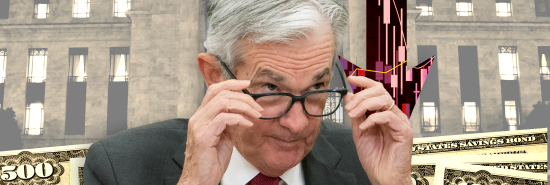
Why the bond markets are wrong to expect rate cuts early next year
Tiana Lowe Doescher
Video Embed
Yields on Treasury bonds, the low-risk investing tool whose performance generally reflects how much confidence investors have in the nation’s economic outlook, have been jumpy of late, suggesting there are reasons for optimism but room for concern heading into 2024.
After one of the worst sell-offs of U.S. Treasurys in over a century, the bond market has made a complete 180. The 10-year Treasury yield recently tumbled from a 17-year high of nearly 5% to 4.17%. That’s a dramatic drive down from just late October, when Treasury yields rocketed to that high-water mark, 4.96%, from 3.50% in the spring. It marked an even wider hike over several years, with Treasury yields at just 0.50% early in the COVID-19 pandemic.
GOP SENATORS LOOK TO CRACK DOWN ON FOREIGN ESPIONAGE WITH TOUGHER REPORTING REQUIREMENTS
Lower bond yields on their own are likely a good thing. Consumers can benefit from the lowest mortgage rates since the summer. And investors in bonds get better value (bond yields and a bond’s resale value are inversely related). The federal government’s new debt also obviously costs less money.
But not for the first time, the bond market may be too optimistic. Federal Reserve Chairman Jerome Powell is not just keen to follow the steady lead of his predecessor Paul Volcker during the high-inflation era of the late 1970s and early 1980s. Powell and Fed board members are continuing their crusade against inflation by refusing to slash interest rates. That is until inflation is safely at 2%. That has meant effectively shrugging off Fed critics such as Sen. Elizabeth Warren (D-MA), a frequent scold of Powell and the Fed generally over the central bank’s interest rate policies.
Moreover, lower bond yields may only prove temporary if the Fed bucks market expectations and keeps the federal funds rate, the interest rate at which banks lend money to each other overnight, higher for longer. The most obvious argument for the Fed’s “higher for longer” route is that the economy simply doesn’t need the stimulus.
The Bureau of Economic Analysis revised our third-quarter GDP growth to a jaw-dropping 5.2%, robust by any measure. For reference, that’s a figure on par with the growth of still-developing economies such as that led by the Chinese Communist Party. And it’s higher than the growth rate Republican presidential candidate Vivek Ramaswamy has proposed, to sneers from 2024 GOP primary rivals. Third-quarter labor productivity was also up 4.7% on an annualized basis, an astounding prospect for our future economic growth.
But perhaps the best argument for the Fed’s “higher for longer” approach is that unlike the 2020 COVID-19-induced recession or even the 2008 financial crash, the rest of the government is tapped out for stimulus funds. In the case of a real and possibly ruinous economic downturn, the federal government cannot afford another CARES Act or American Rescue Plan. Net interest costs are due to supersede annual defense spending by 2027. And already, net interest payments are consuming a staggering 30 cents of every tax dollar received by Uncle Sam.
The Fed has three major tools in its arsenal to conduct monetary policy. Theoretically, it can reduce required reserve ratios for banks to unleash a deluge of liquidity — but those reserve ratios are already zero! Second, it can theoretically finance federal spending through quantitative easing, what critics call “money printing.” But with inflation still at more than 3%, well above the Fed’s ironclad target of 2%, it’s hard to imagine that Powell would want to do the same thing that triggered the worst inflation in 40 years in the first place.
So, the only real mechanism the Fed has is to cut interest rates, but that’s glass it will be loath to break unless it’s a case of an emergency.
CLICK HERE TO READ MORE FROM THE WASHINGTON EXAMINER
Of course, if Congress wants to exercise its constitutional power of the purse and reform that mandatory spending driving the overwhelming majority of our debt, then the Fed can return to business as usual. But Congress hasn’t even figured out how to avert a 23%, across-the-board Social Security benefit cut in the next decade, let alone how to finance a brand new stimulus package independently.
With both parties united in their refusal to crack down on spending, the Fed is the only force fighting the still sticky inflation roiling the economy. The temporary pain of keeping interest rates higher would preserve the Fed’s most valuable tool for stimulating the economy when the business cycle inevitably moves on to a recession.
